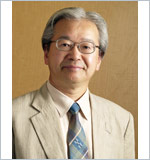国台学术报告 NAOC COLLOQUIUM 2012年 第13次 / Number 13, 2012
Master Plan of Large Research Projects:New Procedure by the Science Council of Japan Norio Kaifu Member of Science Council of Japan Professor Emeritus, NAOJ Time: Thursday, 10:00 AM, Apr. 05, 2012 Location: NAOC A601
 Dr. Kaifu is a Honorary Professor of the National Astronomical Observatory of Japan, and he is a Member of Science Council of Japan, the Council Chair of the Institute for Space and Aeronautical Sciences, and the President Elect of IAU. He earned his Ph.D from the University of Tokyo in 1969. He specializes in radio-wave astronomy and infrared astronomy. He was involved in building the Nobeyama Radio Observatory, which includes a 45-meter radio telescope. Later he was the director of the Subaru telescope project, located in Hawaii. He was awarded the Japan Academy Prize for research on interstellar matter (1997), and the Nishina Memorial Prize for cultivation of Millimeter astronomy (1987). He published 120 scientific papers in refereed journals, 45 Books, and the best-known publications are: Humans in Space History, Mysteries of Space: How Far We Have Come, and Poetry of Space. Dr. Kaifu is a Honorary Professor of the National Astronomical Observatory of Japan, and he is a Member of Science Council of Japan, the Council Chair of the Institute for Space and Aeronautical Sciences, and the President Elect of IAU. He earned his Ph.D from the University of Tokyo in 1969. He specializes in radio-wave astronomy and infrared astronomy. He was involved in building the Nobeyama Radio Observatory, which includes a 45-meter radio telescope. Later he was the director of the Subaru telescope project, located in Hawaii. He was awarded the Japan Academy Prize for research on interstellar matter (1997), and the Nishina Memorial Prize for cultivation of Millimeter astronomy (1987). He published 120 scientific papers in refereed journals, 45 Books, and the best-known publications are: Humans in Space History, Mysteries of Space: How Far We Have Come, and Poetry of Space.
Abstract: The SCJ (Science Council of Japan) started a new procedure on Large Research projects including all field of sciences for the first time in Japan. The new procedure is called "Master Plan of Large Research Projects". Large research projects listed in the Master Plan should be based on strong supports by extensive scientist communities of corresponding fields, and be selected through the SCJ scientific verification process. Purpose of this new SCJ action is to establish democratic and transparent procedure of executing nationwide excellent large scientific projects which lead the cutting edge sciences but also spend much governmental budget. We called for applications of large projects for the SCJ Master Plan in the following two categories: 1) Large Research Facility Project, and 2) Large Scale Research Project. The AO was sent to 205 Japanese universities/research institutes with selection procedures and criteria for the Master Plan listing attached. We had received over 250 proposals, and the SCJ selection committee finally selected 43 projects to list in the “Master Plan 2010” and published it on March, 2010. The Mext (Monbu-Kagaku-Sho), the main funding agency had funded nine projects listed in the Master Plan (partly or totally) in the 2010 budget and they got started. The LCGT, Large Cooled Gravitational wave Telescope, was included among them. Now the funding process of Japanese large scientific projects was established clear and transparent way based on the evaluation by the community of scientists. Some details of the SCJ Master Plan and implementation of large projects, strong impact which the Master Plan gave on wide fields of sciences in Japan, and recent new progress, will be presented as well as positive effects on Japanese astronomy.
All are welcome!Tea, coffee, biscuits will be served at 9:45 A.M.
|













